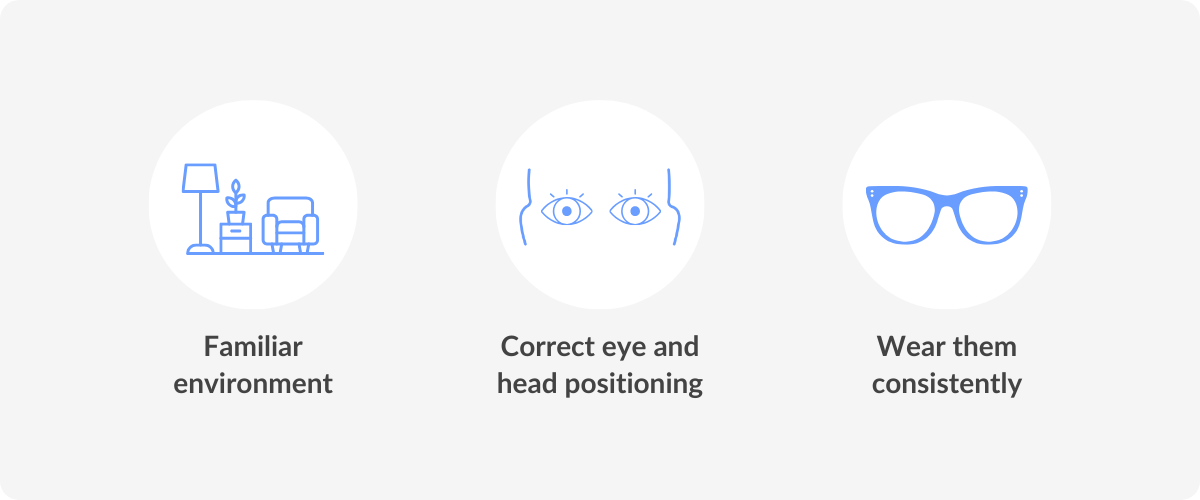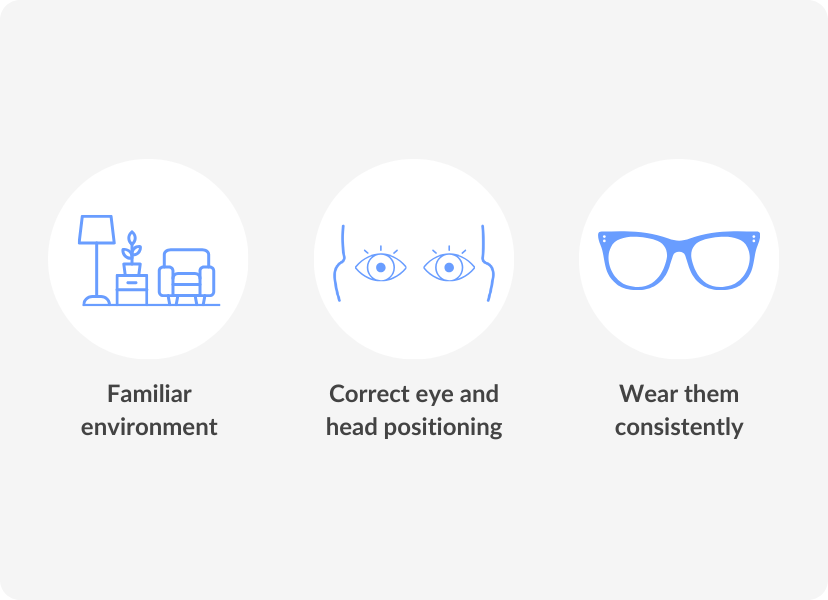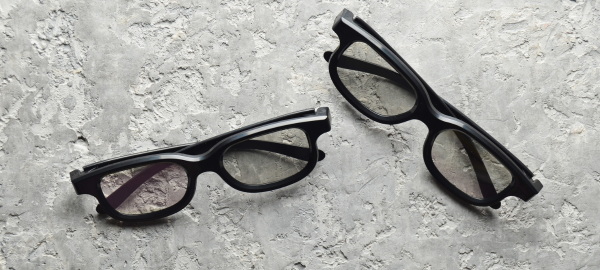Ask our dispensing optician
Your request was successfully submitted!
How to Adjust to Progressive Lenses

Reviewed by
Beck Jinnette
Making the switch to varifocal lenses is a significant step towards a more natural and comfortable vision experience.
If your optician or optometrist has prescribed or suggested varifocal lenses, it means you could really benefit from them on a daily basis.
Varifocal lenses (also called multifocal lenses or progressive lenses) offer a gradient of vision for near, intermediate and far distances, all in the same lens – with no visible line between different prescription powers!
Of course, you may need some time to adjust to these new lenses at the start. Please know that this is completely normal.
The brain and eyes are adapting to a new way of seeing and like any adjustment, it requires a bit of patience and practice.
The adjustment period of new varifocal lenses
The adjustment period to varifocal lenses varies from person to person, ranging from a few days to a couple of weeks.
During this time, it’s common to experience some initial challenges.
As your eyes get used to the gradient zones of the lenses, you might notice that your vision feels unusual.
This often includes blurry vision when shifting focus between objects at different distances, such as when moving your gaze from near to far objects or vice versa.
Tips for getting used to varifocal lenses
Here are some varifocal glasses tips to help you in your gradual transition:


Start in a familiar environment
To effectively adjust to varifocal lenses, it’s recommended to start in a familiar environment.
Begin by wearing your new lenses in the comfort and safety of your own home, where you can navigate and adapt at your own pace.
Engage in familiar tasks such as reading a book or watching television.
These activities are excellent for gradually getting accustomed to the varifocal lens gradient, as they allow you to test various focal lengths in a controlled and comfortable setting.
Eye and head positioning
Adapting to varifocal lenses involves precisely positioning your eyes and head for near, intermediate and distance vision.
For near vision tasks like reading, lower your gaze, not your head, towards the bottom section of the lenses.
This part of the lens is designed for close-up work and using just your eyes to shift focus ensures you utilise the correct zone.
For intermediate vision, such as when working on a computer screen or looking at something at arm’s length, aim to look straight ahead through the middle part of the lenses.
This requires a slight adjustment in eye level without significant head movement, aligning your gaze with the intermediate zone of the lenses.
When focusing on distance vision, like watching television or driving, it’s important to look through the upper part of the lenses.
Lift your gaze slightly while keeping your head in a natural, upright position. This aligns your eyes with the top section of the lenses, which is optimised for far distances.
Don't switch between your new and old pair
When you start wearing varifocal lenses, it’s important that you do not switch between your old and new glasses.
Consistency is vital for achieving clear vision and adjusting to the new visual dynamics.
The more you wear your new glasses, the faster your eyes and brain will adjust to the new lenses, leading to clearer and more comfortable vision.
Incorporate visual exercises into your daily routine to accelerate this adjustment.
Regularly practice focusing on objects at varying distances to train your eyes and achieve optimal vision correction.
DID YOU KNOW?
Varifocal lenses were invented in 1959 by Bernard Maitenaz and have revolutionised vision correction, offering a seamless transition between multiple vision fields in a single lens.


Common issues with wearing varifocal glasses
One frequently encountered issue is a sensation of eye strain and slight dizziness, particularly when your peripheral vision seems distorted.
This is a result of the varying lens powers in varifocal lenses, which can alter your perception as you move your eyes away from the lens’s centre.
Adapting to changes in depth perception is another common challenge.
In the early stages, activities that require depth judgment, like walking down stairs or stepping off curbs, may feel disorienting.
It’s important to approach these activities with caution, take your time to transition and avoid situations where misjudging distance could be hazardous.
If adjustment difficulties persist beyond a few weeks, a consultation with your eye doctor is advisable.
They can check the fit and prescription of your lenses to ensure they are properly optimised for your specific vision needs.
Wearing varifocal lenses
Embracing varifocal lenses can open up a new world of clear and seamless vision. With the right approach and a bit of patience, you’ll soon enjoy the full benefits of your new lenses.
At SmartbuyGlasses, we offer high-quality varifocal lenses from Arise Collective Clarity.
Plus, our expert in-house online opticians are here to help you find the perfect fit and provide personalised advice for your vision needs.
Related articles


Related articles







































